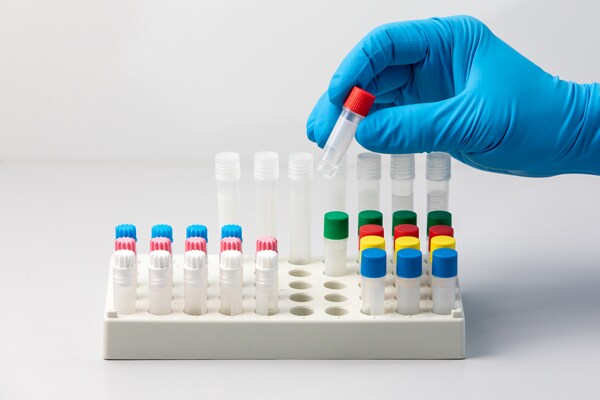Four Tips for Preventing Cross-Contamination in the Lab
Contamination can spread easily in the laboratory environment, with implications for the validity of work carried out and sample integrity, as well as for general health and safety. In this article, we explore how to avoid cross-contamination of chemicals in the lab, including the clear labeling of containers and their contents, and the regular cleaning and sterilization of work surfaces.
Cleaning and Sterilizing Work Surfaces
When it comes to laboratory cleanliness, procedures must be thorough and effective. How cleaning solvents are stored and dispensed can themselves have a significant impact. Wash bottles such as the Azlon™ Round Integral Wash Bottle, which is designed with an integral spout and precision tip, can be used safely and efficiently - minimizing contamination as the inner tube doesn’t need to be removed and placed on the workbench when the bottle is refilled. Another option is the Azlon™ Wide-Neck Wash Bottle, which is specifically designed for easy and spill-free filling, reducing the amount of unnecessary mess and clean-up on your workstation. All bottles can be customized for easy identification, whether it's for water, acetone, methanol, or some other solution.
Keeping the laboratory clean is the responsibility of all the people who work in it and a few guidelines to help are detailed below:
- Clean up any liquid or powder spills as soon as they occur. All laboratory spills should be treated as high priority because, as well as being a source of contamination, they can also result in serious injury or danger to those in the area
- Return all laboratory products to their correct places once used. This will help with overall efficiency and smooth operation of the laboratory
- After cleaning equipment, and glassware in particular, make sure it is safely stored to minimize breakages
- Leave your workbench clean at the end of the day. This will save time the following day when work is resumed and reduce the chance of contamination impacting future processes
Clear Identification
It is vital that sample collection and storage devices within the laboratory are labeled, where appropriate, to enable contents to be quickly and easily distinguished. Errors can be costly and jeopardize valuable work; fortunately, easy sample identification can be supported in a number of ways, such as by using color-coded caps on storage vials, or by using barcodes and clearly printed labels. For example, DWK Life Sciences DURAN™ Stretchable Silicone Lids make use of color-coding to provide a highly visual, identifiable way of covering laboratory containers of different shapes and sizes, especially containers that typically do not have associated lids or closures (such as beakers or Erlenmeyer flasks).
Use of Protective Equipment
Even when not handling hazardous materials, it is best practice to wear gloves as they can help protect your skin from chemicals or other hazards you handle and, in some instances, may also protect your work from contamination. After use, gloves should be removed, disposed of appropriately, and replaced with a fresh pair-further reducing the risk of contamination in the lab.
Laboratory hoods (e.g. laminar flow hoods and biosafety cabinets) are ventilation devices that are widely used in the laboratory to provide controlled areas of work that will help to protect both laboratory personnel and the materials they are working with. They are especially useful when specific work depends upon a sterile technique or involves pathogenic or other highly sensitive materials that could easily be contaminated.
Wash, Rinse, Repeat!
When it comes to keeping on top of cross-contamination in the laboratory, a great mantra is 'clean well and clean often'. Always clean appropriate laboratory equipment between uses, with frequent cleaning of work surfaces and other sterile areas as part of this routine. Running regular autoclave cycles is also recommended in order to ensure sterilization of containers. To avoid potential contamination, ensure you follow the relevant instructions for the autoclaving process itself, including the duration of the cycle and how to prepare equipment properly. Not all items can be autoclaved, especially plasticware made of polymers unsuited to the temperatures found in an autoclave. In this instance, a thorough cleaning process should be undertaken instead.



